Welcome to the James Hardie Modern Homes Forecast 2024—our first annual research report for homeowners and trade professionals on the seven popular, enduring and emerging contemporary home styles.
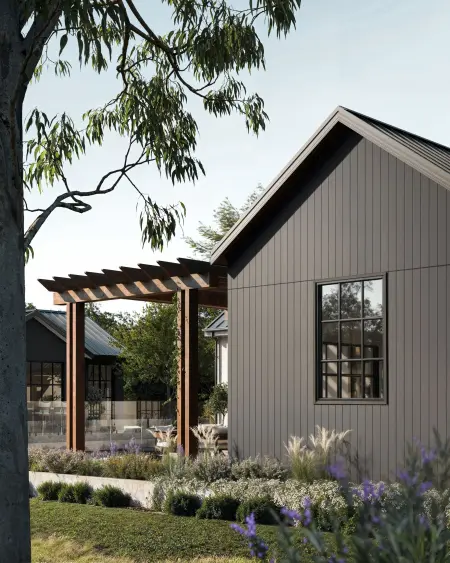
Modern Farmhouse
A seamless balance of traditional design and contemporary elements, modern farmhouse style references classic architecture with a focus on clean lines, open spaces and materiality.
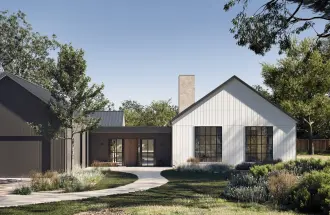
Modern Heritage
The Modern Heritage architectural style elevates traditional homes through sensitive restoration and bold renovation, with contrast as the defining element.
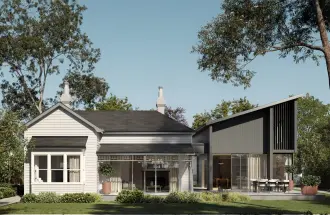
Box Modern
The Box Modern style is characterised by large blocks or cube-shaped volumes that are stacked, intersecting, or arranged to form compelling, contemporary residences.
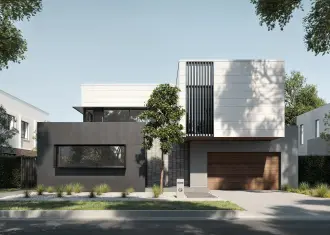
Japandi
Japandi brings together the best elements of Scandinavian and Japanese minimalism in a hybrid architectural style, resulting in a simple and elegant home.
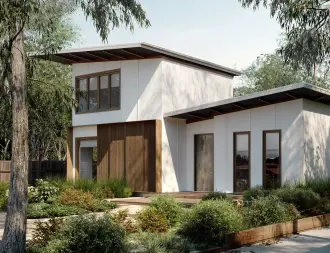
Barn
Barn homes boast vaulted ceilings, open plan living spaces and bold street presence. A steeply pitched gable roof is a must.
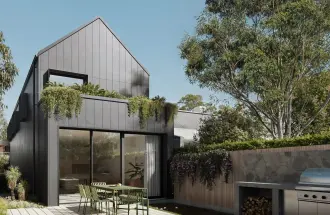
Modern Coastal
Inspired by relaxed Australian beach heritage, Modern Coastal style offers a contemporary take on traditional coastal design with laid-back spaces, modern minimalism and crisp white weatherboards.
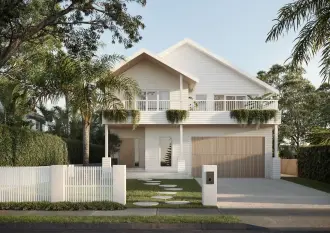
Mid-Century Modern
With its emphasis on practicality and functionality, Mid-Century Modern is seeing a huge resurgence. Reimagined for 21st century living, the classic style balances contemporary minimalism with the finesse, intelligence and spirit of Mid-Century Modern architecture.
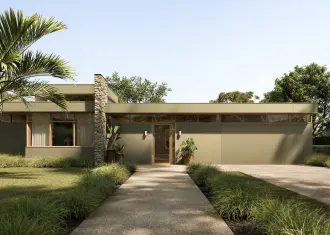
Discover your home style.
Take the James Hardie home style quiz to find your perfect modern home.
Drivers of change
Defining the most relevant home styles requires looking at external drivers of change — the factors and forces that influence the evolution of housing design. These drivers shape the direction and pace of change, and by understanding these drivers we can adapt and plan strategically for the years of modern design ahead. There are significant global forces informing the Societal, Technological, Environmental, Economic and Political drivers of change on a local scale.
Global
A confluence of widespread factors including COVID, political instability, inflation and supply chain issues have driven a preference to local over global. This spans across all industries, from travel, to homewares, to building materials.
Adapting to climate change means there will likely be a greater global focus on creating climate resilient housing. In some cases, entire suburbs or regions will need to move due to extreme weather events.
A global generational power shift will occur over the next five to ten years. The silent generation and baby boomers currently hold the majority of wealth and power, however, this will naturally transition to younger generations.
Local
Societal
Social norms are evolving – we’re changing the way we live and rethinking our priorities.
Our experiences through the pandemic saw us re-evaluate what was important to us, with many prioritising health and wellbeing. There’s a growing demand for our home to feel tranquil, restorative and connected to nature.
Our aging population has created a demand for evolved housing, as more than 25 percent of the population are over 65 years old and couple families without children are projected to become the most common family type in Australia over the next five years.
Despite a push back to the office, over 53 percent of Australians are working from home, so home offices are being prioritised and upgraded.
Diversity, equity and inclusion will become the standard in Australia, as Gen Z are the most racially and ethnically diverse generation in history. This will see a growth in multicultural design influences in our homes.
Technological
In today’s world, accelerated digital behaviours are the norm, with significant growth in online traffic and sales.
The advent of the digitally native consumer has fostered an explosion of design trends and a proliferation of technology and apps that help customers create their dream home. Design is becoming democratised through Instagram and other social platforms that showcase all aspects of home design.
Advances in building technology are also set to disrupt the building industry, such as 3D printing as well as virtual reality and design visualisation tools. This technological landscape will see users demanding higher quality products and more choice and flexibility.
Environmental
Climate change concerns see us reconnecting with nature while also needing more resilient buildings.
Ethical consumers are becoming ubiquitous, with an expectation for businesses to do more than just make a profit.
Passive House design is a growing trend with solar, battery, window design and insulation playing key roles, as people look to make their homes more sustainable and reduce their environmental footprint. The National Construction Code 2022 (NCC) requires all new Australian houses and apartments to meet an increased minimum energy efficiency rating of 7 stars under the Nationwide House Energy Rating Scheme (NatHERS) or BASIX in New South Wales. On the global political landscape, progressive climate bills and policies are in motion.
Economic
No one is immune to the impacts of the rises to the cost of living and this has tempered the home improvement boom that happened alongside the pandemic.
Building materials and labour costs rose at their fastest pace in almost 50 years due to supply constraints, however the growth in renovating, hobbycraft, and thrifted home décor continues to rise. There has also been a shift towards an experience-driven economy, with many people financially prioritising travel and hobbies. This thirst for new experiences, contrasted by the economic pressures forcing us to spend more time at home, is impacting how we design our homes.
Political
We learned there’s been renewed support for local manufacturing, as regulations tighten on construction standards.
We’ve seen an increase in conversations around rebooting local manufacturing due to supply chain disruptions, while building has been affected by delays in building materials and scarcity of labour. There has also been a wave of socially progressive politics manifesting through independent politicians in both the Australian and New Zealand governments.
Create your own moodboard
A moodboard can help clarify and communicate your vision, let us help you put your inspiration in one place. Start creating dream facade today
Order your free sample.
Order a sample from the Hardie™ Architectural Collection.
Find a Display Home
James Hardie collaborates with builders around the country to deliver inspiring Modern Display Homes.